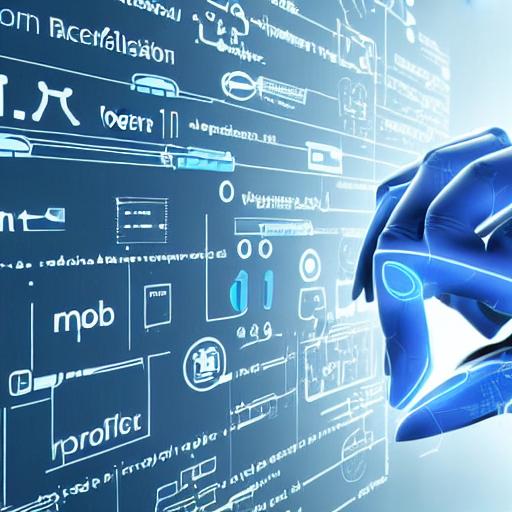Discussions over whether “robots” will replace people have increased since the introduction of sophisticated AI tools like ChatGPT and Google’s Bard, and studies indicate that some jobs—surprisingly, some traditionally white-collar work—may be significantly impacted.
Primary Data
Since the public release of OpenAI’s ChatGPT, generative AI—a type of artificial intelligence that can produce text or other content in response to user prompts—has quickly grown in popularity.
Since its November 2022 release, users have used the AI chatbot ChatGPT for a variety of tasks, including as creating programming and producing college-level essays.
Once Google introduced Bard on March 21, a rival to ChatGPT and a separate entity from the company’s Google search engine, the AI competition picked up steam.
Over 300 million jobs, or 18% of employment worldwide, could be automated, according to a new Goldman Sachs analysis, with more developed countries being severely impacted than emerging markets.
Two-thirds of U.S. and European jobs “are subject to some degree of AI automation,” according to the paper, and about a quarter of all jobs may be totally carried out by AI.
The most likely group to be impacted by workforce automation, according to researchers from the University of Pennsylvania and OpenAI, are some educated white-collar workers making up to $80,000 per year.
Jobs in the information processing industries, like as IT, are the most exposed to generative AI, while those in agriculture, mining, and manufacturing are the least exposed. This is because those occupations require “programming and writing skills,” which are more closely tied to GPT’s capabilities.
Generative AI isn’t flawless; OpenAI and Google both acknowledge that their software occasionally responds incorrectly and has other problems, such as ChatGPT’s knowledge base’s expiration in 2021 and Bard’s low conversation retention.
The Jobs Most Affected
Finance and banking: Banks have already started using AI in their operational strategies. According to the Cambridge Centre for Alternative Finance and the World Economic Forum, 56% of banks say they have integrated technology into areas of their operations like management and 52% say they have utilized it to generate money. According to Senior Vice President of Capital One Abhijit Bose, AI may “watch transactions” to provide in-depth financial guidance on saving and spending.
In order to better organize its wealth management database and make it easier for advisors to access information and conduct research, Morgan Stanley has started deploying chatbots powered by OpenAI. The World Economic Forum forecasts that AI will impact the finance industry in three ways: by reducing jobs, creating jobs, and improving efficiency. Additionally, they predict that AI will replace 23% of positions in China’s banking industry by 2027.
Media and marketing: According to Natural Sciences head scientist Kristian Hammond, 90% of news will be written by machines. In advance of earnings announcements, Natural Sciences’ Quill software, an AI paraphrase tool, prepares corporate reports. Axel Springer, a German publisher, said in February that it had ambitions to go digital only, which involved eliminating jobs in favour of automation and “advanced technology.
The usage of ChatGPT by journalists for a variety of media publications, including Business Insider, CNET, and CNBC, has drawn criticism for the stories’ frequent use of misleading information. BuzzFeed CEO Jonah Peretti stated in January that the company would rely on ChatGPT to enhance quizzes and tailor content. According to Salesforce study, 84% of marketers reported utilizing AI in 2020, a significant increase from 29% in 2019. According to the survey, high-performing marketing teams used AI and machine learning on average seven different ways in 2020, and more than half of them intended to use it more often in 2021.
Legal services: A lawyer used ChatGPT to publish a 14-page legal document in Social Science Research Network on a variety of topics, including drafting a contract, justifying the Supreme Court’s ruling on same-sex marriage, and inventing deposition questions. According to Andrew Perlman, the paper’s author and dean of Suffolk University Law School, the AI bot has the ability “to solve access to justice concerns” and provide legal services to individuals who cannot afford them.
According to a research released in 2022 by Legal Services Corp., low-income Americans receive insufficient or no legal assistance for 92% of their civil legal issues. Some have already started integrating AI into legal services, such as the business Lawgeex, which offers a service that scans contracts more quickly and accurately than humans.
Jobs Least Impacted
Manufacturing and factory workers: Since the launch of UNIMATE in 1961, this industry has been experiencing automation. General Motors is recognized as the first significant manufacturer to integrate robotics into their assembly lines. Generative AI, though, might hasten the procedure. For instance, Elon Musk presented the Tesla Bot, also known as Optimus, a self-driving android designed to take the place of people in monotonous, hazardous professions. These bots will initially be deployed in Musk’s Tesla plants before being made available to millions of people worldwide. A survey from MIT and Boston University predicts that by 2025, AI might replace up to two million people in the manufacturing industry.













